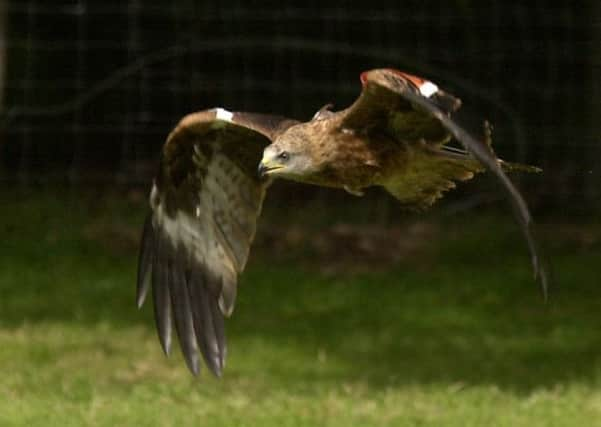Country & Coast: Red kite


The great American ornithologist John James Audubon caught the essence of its flight perfectly when he wrote: “Gliding along in easy flappings, it rises in wide circles to an immense height, inclining in various ways its deeply forked tail to assist the direction of its course, dives with the rapidity of lightning, and suddenly checking itself, reascends, soars away and is soon out of sight.”
Once common across the whole of Britain, the red kite was blamed for killing poultry and game birds, and so was persecuted to virtual extinction by Victorian farmers and landowners.
Advertisement
Hide AdAdvertisement
Hide AdAccording to the RSPB, at one time the red kite - which it lists as an Amber List species because of its historical decline - was confined to Wales.
In 1952, when Ralph Chislett wrote Yorkshire Birds, it was absent from all three Ridings.
The revival of its fortunes in this part of Britain is due to the Yorkshire Red Kite Project, which in 1999 began reintroducing birds on the 5,500-acre Harewood Estate north of Leeds.
So successful has it been that this year the number of pairs known to have bred in Yorkshire has reached three figures for the first time.
Advertisement
Hide AdAdvertisement
Hide AdI sometimes have to stop myself becoming blasé about the presence of kites when I’m out and about.
Compared to the early days, when birdwatchers had to visit Harewood if they wanted to see one and even then were sometimes disappointed, the birds are now a permanent fixture above many of Yorkshire’s rolling fields.
They have spread westwards in Lower Wharfedale to Bolton Abbey, northwards to Ripon, and eastwards to Market Weighton.
Most remarkable of all, they are a daily - sometimes hourly - sight above the back gardens of Leeds.
Advertisement
Hide AdAdvertisement
Hide AdThe 2014 breakdown of the number of pairs of red kites attributed to the Harewood project is: West Yorkshire 63 (up from 54 last year); North Yorkshire 40 (35 in 2013); and East Yorkshire 9 (12).
The person who deserves much of the credit for this success story is a soft-spoken man named Doug Simpson, with whom I once sat on the committee of Leeds Urban Wildlife Group. Doug was deservedly awarded an MBE for his work as full-time co-ordinator of the project, and he has continued the work on a voluntary basis since its funding came to an end in 2006.
The birds’ diet is mainly carrion - dead rabbits, rats or birds - but also includes worms and even frogs.
Unfortunately, says Doug, 11 kites have died after feeding on poisoned rats.
Advertisement
Hide AdAdvertisement
Hide AdOther poisons in illegal baits have been found and some birds have been shot, an indication that the old prejudice against red kites has not gone away.
Doug tells me he has been recording the birds’ habit of adorning their nests with soft toys and items of clothing.
The very first successful breeding pair back in 2000, he says, had a teddy bear’s head and a tea-towel.
Last year he found three children’s woollen gloves - none matching - in one nest, and this year a Bagpuss in pristine condition lay below another. He adds: “All this begs the question, where do they find these things?”